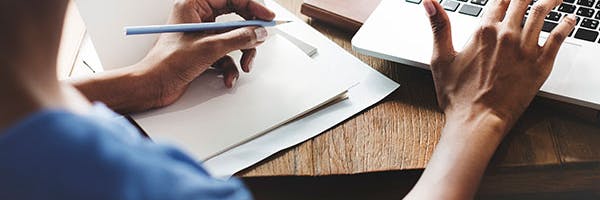What is an Individualized Education Plan?

As a school leader, you take on the (rather lofty) responsibility of ensuring your students have enough support to learn, grow, and succeed in their education.
One way to achieve this growth -- and promote a positive school culture-- is to make sure individualized education plans (IEPs) are effective and useful for every student that needs them.
To keep things running smoothly, you need to create an IEP that actually works. One of the best ways to do this is to run a successful IEP meeting.
Leading the IEP meeting is a big undertaking. It’s important to be a careful leader every step of the way, as certain mistakes can have serious consequences.
For example, one principal was removed from a school for violating students’ IEPs.
With the right preparation, you can make sure your school’s IEPs are fair, effective, and followed by everyone. And we’re here to help you through it!
Ready to feel confident and equipped to handle your role in the IEP process?
IEP Definition
What is an IEP? What does successful IEP implementation mean for your school environment? And more importantly, what does it mean for your students?
Let’s start with the basics.
IEP stands for individualized Education Program: a mandatory special education program for public schools.
Each IEP is individually created for specific students with disabilities or who require special accommodations, such as gifted students. It outlines any expectations for the student that differ from regular curriculum goals.
The entirety of the IEP involves two components:
- The written plan
- The actual services the plan outlines.
Each student’s Individualized Education Program is created by a unique IEP team, dedicated to their success. The IEPs are reviewed periodically to ensure progress is being made or to make alterations, if necessary.
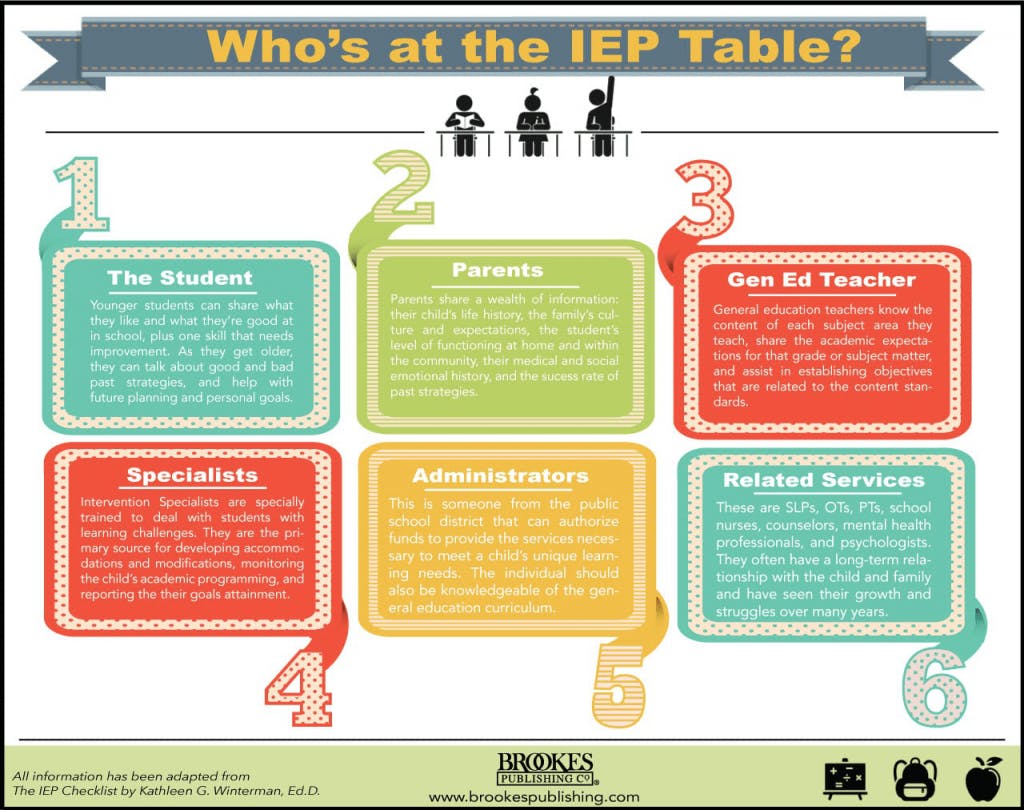
Image source: Brookes Publishing
A good IEP is much more than a mere overview of academic supports and services.
Individualized Education Programs should outline:
- The student’s strengths and needs
- How the student learns and performs best
- A detailed plan for the student’s individual success
- Services that will help the student achieve this success
They should also:
- Reference the student’s baseline abilities as they enter the school year
- Measure and track student success
- Keep students, parents, educators and other service professionals accountable to the student’s goals
Why do we use IEPs?
IEPs are incredibly useful for students. They’re also mandatory at public schools, for every student who has the right to receive special education as per the Individuals with Disabilities Education Act (IDEA).
The IDEA outlines Free Appropriate Public Education (FAPE) as an educational right of all children in the US. This means every student deserves a personalized education program that meets their individual needs -- while also meeting necessary educational standards.
IEPs give students personal goals and services and keep them on track -- helping them build the necessary skills to succeed.
IEPs are also important for your school environment because:
- They focus on student strengths and how to leverage them.
- They involve a collaborative process.
- They use individualized goals and make sure students can achieve them.
- They give a complete picture of the student’s needs, not just academic requirements
- They’re flexible -- designed to change and grow with the student.
- They give students and parents a voice and ensure legal protection.
How to write an IEP
If you’re running the IEP meeting, you'll work with your team to put together a first draft of the IEP to go over.
IEPs can be lengthy documents, and their formats often differ -- especially from state to state.
As an IEP writer, it’s understandably a bit daunting to get started on your draft. Thankfully, there are certain aspects all IEPs should be built on.
Here’s what you need to include in your IEP:
1. Current performance/strengths
The IEP must contain a description of the student’s current performance in school -- often referred to as present Levels of Performance (PLOP).
It outlines the child’s strengths and needs, based on evaluations from IEP team members.
This section looks at more than just academic performance. It can also include:
- Attendance
- Behavior
- Health
- Physical activity levels
- Social skills
- Special diets (for example, if the student has diabetes or food allergies)
- Weather restrictions (ie. if the child has to stay indoors in certain temperatures)
2. Goals
Include annual goals for the student, usually broken down by term, created from the previously identified strengths and needs.
Outlining specific goals makes everyone accountable for ensuring the student grows and develops throughout the year.
3. Special education and other services
Outline any accommodations and services the student requires.
Accommodations and supports might include things like:
- Assistive technology
- Extended due dates
- Transportation
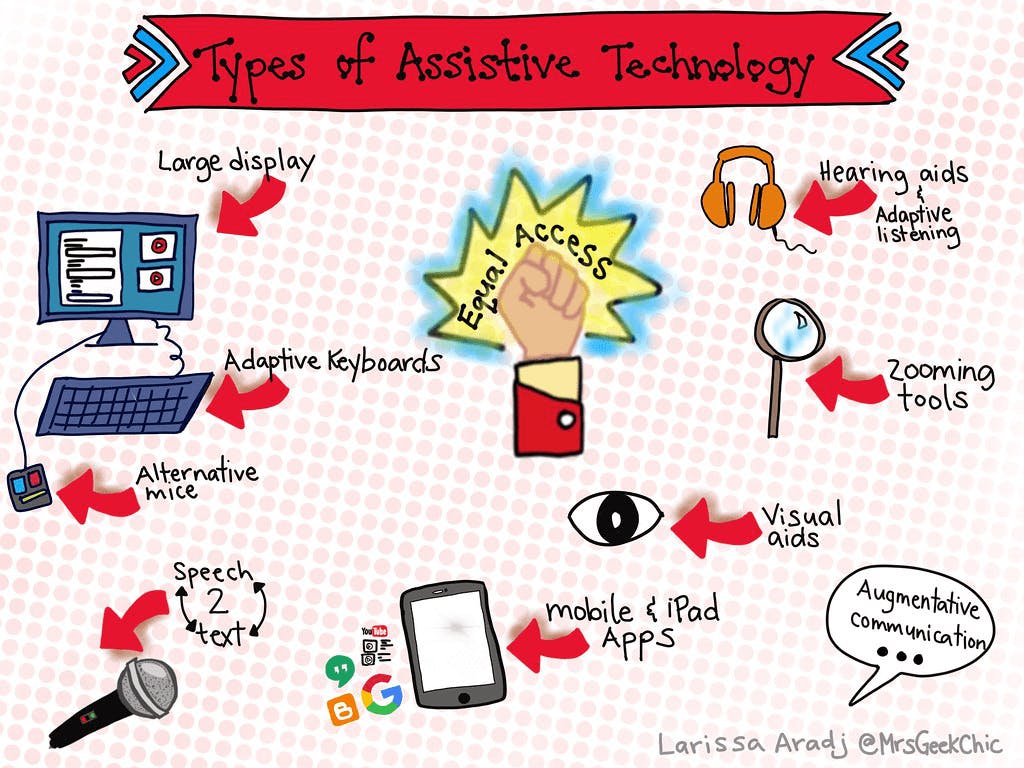
Image source: Larissa Aradj on Flickr
Services may include things like:
- Speech-language therapy
- In-school counseling
- Tutoring
4. Level of participation in the regular classroom
Specify how much time the student will spend in the regular classroom, working with other students, or participating in schoolwide activities.
Many factors will contribute to this decision, and the entire IEP team should work together to find a reasonable expectation.
5. Participation in state and district-wide tests
If a student is able to participate in standardized tests, make sure the IEP outlines modifications or assistance needed.
If the student is unable to participate in testing or if the test isn’t appropriate for the student, the IEP will outline how the child will be tested on the subject matter instead.
6. Answer the other 4 Ws (+ How)
You’ve already answered “what.” Now, it’s time to cover the rest.

Who will provide or assist with each service?
Where will the child spend the school day and receive services?
When will services begin, how often, and how long will they last?
Why are these goals and services outlined for this student?
How will each service be provided?
7. Transition plans
When a student reaches age 14, transition plans must be addressed to plan what subjects are needed to achieve future goals.
When the student reaches age 16, a transition plan is mandatory to prepare the student to leave the public school system.
The IEP should keep a record of the agreed-upon transition plan.
8. Progress measurement
Finally, the IEP outlines how progress will be measured for each skill, who will measure it, and how it will be reported to the rest of the team.
9 Tips to lead a successful IEP meeting
Now that your draft IEP is written, it’s time to coordinate the initial IEP meeting.
Leading a meeting is no small task -- but any good leader would agree that the hard work is worth the reward!
Follow these nine guidelines to lead your most successful IEP meeting yet.
1. Create SMART IEP goals
Want an easy way to find out which IEP examples are good quality? Check whether or not they use SMART goals.
Whether they focus on academic or functional skills, IEP goals should always be SMART:
Specific, Measurable, Attainable/Achievable, Relevant, and Time-bound.

Image source: Wrightslaw
Try to include every SMART section when writing goals in the IEP document.
Use the following template as inspiration (but feel free to change your word order or add extra details):
To [identify skill being targeted], [Student] will [specific goal] with [attainable level of achievement] accuracy and [attainable level of support] supports by [attainable time frame], as measured by [how the skill will be measured, where, and by whom].
For more inspiration, check out our IEP goal bank below, organized by skill.
IEP goals for reading:
- “To improve reading fluency, [student] will read 3rd grade level passages at a fluency rate of 70-80 words per minute with 80% accuracy by the end of the term, on three out of four occasions, as measured by fluency data collected by her teacher on each occasion.”
- “To improve reading comprehension, [student] will read a 3rd grade level passage and make at least three inferences about the text with 80% accuracy, as measured by teacher reports, on three out of four occasions by the end of the school year.”
IEP goals for writing:
- “To improve [student]’s content of writing, she will combine a minimum of four simple sentences to form a paragraph on a given topic by the end of Term 2. The paragraph will follow logical sequence and contain a topic sentence, at least two supporting details, and a conclusion. It will be marked by [student]’s teacher.”
- “By the end of Term 1, [student] will write 10 simple sentences that are verbally presented to her by her resource teacher, using correct punctuation with 70% accuracy, to boost [student]’s grammar and punctuation during the term.”
Language/communication IEP goals:
- “By the end of term 2, [student] will use his communication board to make basic 1-2 word requests, with prompting, on three out of four occasions - to be tracked by his speech-language pathologist. This will improve [student]’s class participation and communication.”
- “To improve spoken language comprehension, [student] will follow four out of five basic two-step directions given orally by his teacher with 100% accuracy and without repetition, by the end of Term 1.”
IEP goals for reading:
- “To improve reading fluency, [student] will read 3rd grade level passages at a fluency rate of 70-80 words per minute with 80% accuracy by the end of the term, on three out of four occasions, as measured by fluency data collected by her teacher on each occasion.”
- “To improve reading comprehension, [student] will read a 3rd grade level passage and make at least three inferences about the text with 80% accuracy, as measured by teacher reports, on three out of four occasions by the end of the school year.”
IEP goals for writing:
- “To improve [student]’s content of writing, she will combine a minimum of four simple sentences to form a paragraph on a given topic by the end of Term 2. The paragraph will follow logical sequence and contain a topic sentence, at least two supporting details, and a conclusion. It will be marked by [student]’s teacher.”
- “By the end of Term 1, [student] will write 10 simple sentences that are verbally presented to her by her resource teacher, using correct punctuation with 70% accuracy, to boost [student]’s grammar and punctuation during the term.”
Language/communication IEP goals:
- “By the end of term 2, [student] will use his communication board to make basic 1-2 word requests, with prompting, on three out of four occasions - to be tracked by his speech-language pathologist. This will improve [student]’s class participation and communication.”
- “To improve spoken language comprehension, [student] will follow four out of five basic two-step directions given orally by his teacher with 100% accuracy and without repetition, by the end of Term 1.”
Math IEP goals:
- “To build skills in addition and subtraction, [student] will solve 20 1-digit addition and subtraction problems with 80% accuracy, as marked by his teacher, by the end of Term 3.”
- “To build a foundation for further knowledge in geometry, [Student] will correctly identify a minimum of five basic geometric shapes after being given verbal cues, with 90% accuracy on four out of five occasions by the end of Term 2.”
Social-emotional IEP goals:
- “To improve self-regulation by the end of Term 1, [student] will correctly identify when she is feeling angry or frustrated using visual prompts, and choose one strategy to use to regulate her emotions, 60% of the time - as measured by her educational assistant.”
- “To develop confidence, [student] will identify and explain a minimum of 10 positive traits (10 things he likes about himself) in an independent project, to be handed in by the end of the term.”
Behavior IEP goals:
- “To improve understanding of acceptable classroom behavior, [student] will be able to identify a minimum of five classroom rules on four out of five occasions by the end of the school year, as tracked by her teacher.”
- “To increase cooperation in class, [student] will respond appropriately to one-step directions given by his teacher on three out of five occasions by the end of Term 2.”
Executive functioning IEP goals:
- “With support from her Educational Assistant, [student] will organize every academic project using a work outline by the end of Term 1- detailing resources needed, steps to take, and a work schedule.”
- “To improve time-management skills, [student] will independently plan his daily tasks at the beginning of every school day using a visual schedule, when he is verbally prompted to do so by his teacher.”
2. Bring extra documents
The IEP is not the only document you should put together before your meeting.
If you want a seamless implementation of the individualized education program, you’ll want as much documented information going into the meeting as possible. This can include:
- A written notice to all participants prior to the meeting -- including the meeting agenda, dates and locations.
- A summary of IEP information -- for all participants, or for occasional staff like substitute teachers.
- A template of the meeting minutes -- for participants to fill out and log what’s been discussed.
- Informational resources for parents -- including FAQs, legal rights, and plans going forward.
3. Keep students involved
Whenever possible, students should be involved throughout the entire IEP process.
Ask students to reflect on their own strengths and needs, and encourage them to keep track of their own progress. Take their input on when and how services should be offered. And let them take a leading role in their own IEP meetings, where they can tell the group what they want from their own education.
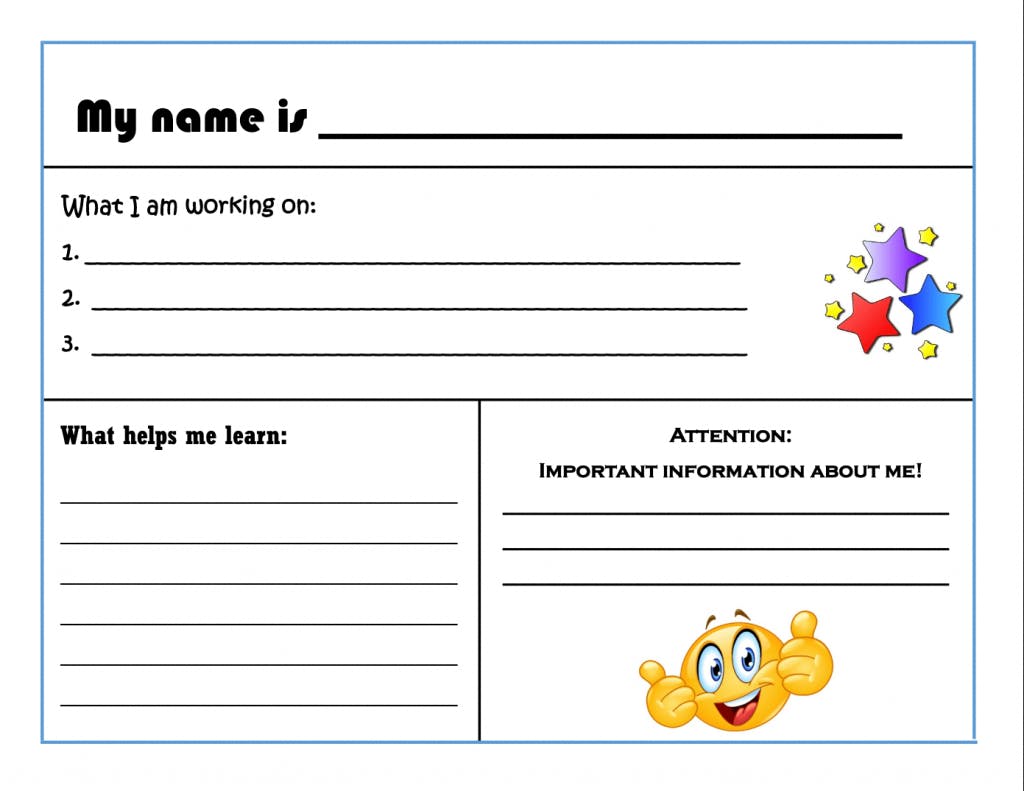
One way to include students throughout the IEP process is by having them write out their goals and strengths, to keep them informed and encourage self-reflection. Image source: Andrea Farley on Teachers Pay Teachers.
For example, students can use tools like My IEP to stay organized and learn how to participate during their own IEP meetings.
Letting students lead their own meetings encourages self-advocacy and boosts confidence. Plus, it helps you put together an IEP that will yield positive results!
Note: if students can’t participate (or if it’s decided it’s not appropriate), have parents and teachers consult with them beforehand to encourage indirect involvement.
4. Keep parents in the loop
IEP meetings are often emotional and stressful for parents, so keeping them comfortable and informed is key to running a harmonious meeting.
Communicate with parents from the very beginning, so they are aware and ready to begin the IEP process.
Before the first meeting, work with parents to schedule a good time and location. Make sure they have important documentation going in, including a copy of the IEP draft to look over beforehand.
Don’t forget to inform parents of their legal rights, and remind them they can invite other relevant parties to join the meeting as well.
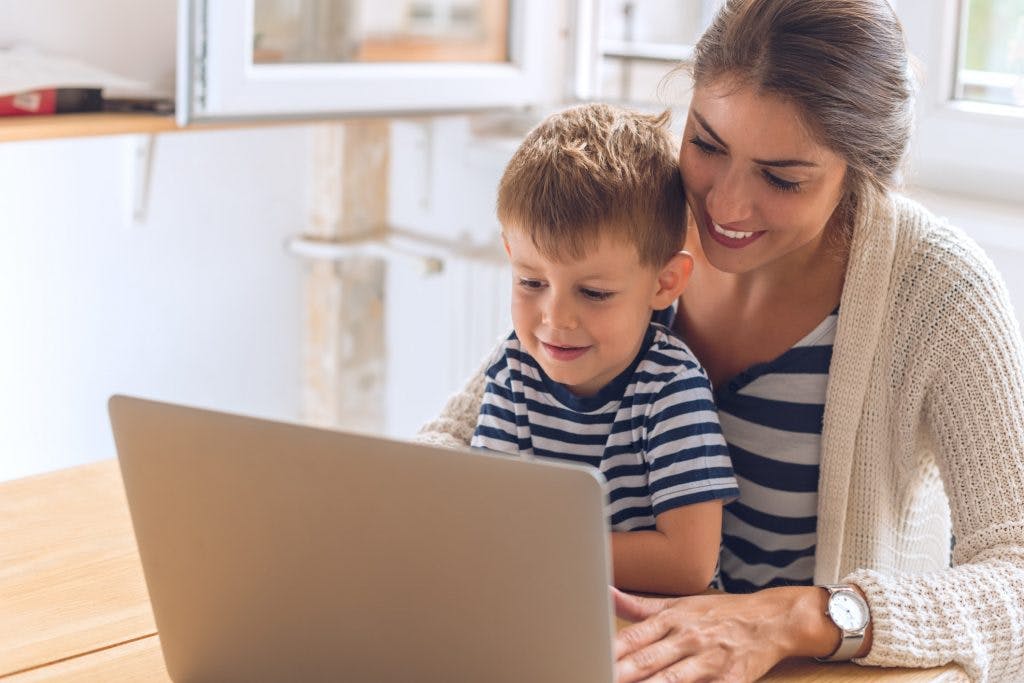
5. Collaborate with other team members
Although you’ll be acting as a leader, contributions from the entire team are what make an IEP meeting truly successful.
Prioritize collaboration when drafting the plan, running the meeting, and implementing the IEP. Encourage transparency and two-way communication so everyone understands each team member’s role.
You’re also responsible for making sure every person fully understands their role and the importance of following the IEP accurately. This might involve providing extra training on the IEP process to those who need it.
Most importantly -- make sure you include all relevant parties in the discussion.
Children who qualify for IEPs often work with a number of specialists to target specific areas. These people will likely be completing and interpreting initial evaluations of the student. This might include:
- Audiologists
- Behavior therapists
- Counselors
- Dieticians
- Doctors
- Occupational Therapists
- Ophthalmologists and optometrists
- Physical therapists
- Psychologists
- Recreational therapists
- Social workers
- Speech-language pathologists
It’s important that you welcome each of these professionals’ contributions, as they can provide targeted insights and make sure the student receives adequate support.
6. Ask about your language
Language is a powerful tool. And, as the saying goes --with great power comes great responsibility.
When describing disabilities, lots of people choose to use people-first language. However, in many other cases, identity-first language is preferred. Other individuals might have their own preferences, separate from these.

Image source: CDC
As Career Counselor, Teacher and Blogger Meriah Nichols explains:
“You can never make hard and fast rules about what anyone should call themselves. The point here is that a lot of things have happened in the Disability community since People First language came out, and things have changed. Some of us still want to use People First. Some of us want Identity First.But NONE of us want to be told what we want by someone without a disability!”
Every person with a disability has a unique perspective. So, as a rule of thumb, ask first!
As you prepare for your IEP meeting, ask the student (or their parents) how they want their disability described, and use this language going forward.
7. Make use of technology
Technology has helped schools make huge strides in the IEP world. It’s been particularly helpful in tracking goals and differentiating content. It’s also a great way to create a multimodal learning environment and teach students useful digital skills.
There are plenty of online IEP tools, like Embrace Education, to make the process more accessible and less tedious. Data tracking on tablets was also found to improve teaching instruction and student learning.
As another example, one digital tool that’s useful throughout the IEP process isProdigy.
Prodigy is a fun and engaging curriculum-aligned digital math program designed for 1st to 8th grade students!
Teachers use Prodigy for students with IEPs to:
- Frequently track student progress in targeted math skills
- Make data-informed decisions about student strengths and goals
- Scaffold learning and use as an RTI tool
- Differentiate math content for specific students
- Create assignments for extra practice in certain areas
"I use prodigy to help me understand where my students are needing the most help. I also use it in their IEP files as progress samples. This is a really great program and I wish I had it when I was in school!" -Diana, K-8th grade Special Education Teacher
"I have incorporated the data from Prodigy reports in order to write more individualized IEP goals and to provide data to parents on their student's current math level." -Meghan Kirk, 2nd-6th grade Special Education Math Resource Teacher
8. Create an emergency response plan
Make sure the IEP covers every possible avenue by including an emergency response plan, specific to the individual student.
Students with things like food allergies, extreme behaviors, or health crises need a plan in place, so every participant knows how to prevent emergencies, and how to promptly respond to those that do occur.
Include your emergency response plan in the IEP draft, then welcome suggestions for improvement during the meeting.
A reliable emergency response plan will give students, parents and teachers confidence in the child’s safety and the safety of others.
9. Be proactive
Try to stay one step ahead before, during, and after the meeting.
Schedule all future IEP meetings ahead of time and make sure everyone can attend. You should also schedule regular meetings for those who work directly with the student, to assess progress and revise plans accordingly. Make this schedule easily available to everyone involved.
It’s also a good idea to create a tracking plan. This helps teachers and support staff implement the IEP and constantly track it.
Finally, promote constant communication and address conflict as soon as possible to tackle issues before they become severe.
Final thoughts: IEPs
Although there's much more to the entire IEP process, the first step to helping each child achieve their goals is to lead a successful meeting that:
- Emphasizes the student's strengths
- Promotes collaboration
- Carefully considers every detail
Use this guide to plan an IEP meeting that will empower your students and give them the education they deserve!
Want a fun way to help support your IEP students? Try Prodigy Math — a curriculum-aligned math platform that offers easy-to-use and time-saving differentiation tools for teachers.
Teachers can use Prodigy to:
- Align in-game adventures with classroom lessons
- Collect insights into student progress and learning gaps
- Send differentiated content and Assessments in just a few clicks





